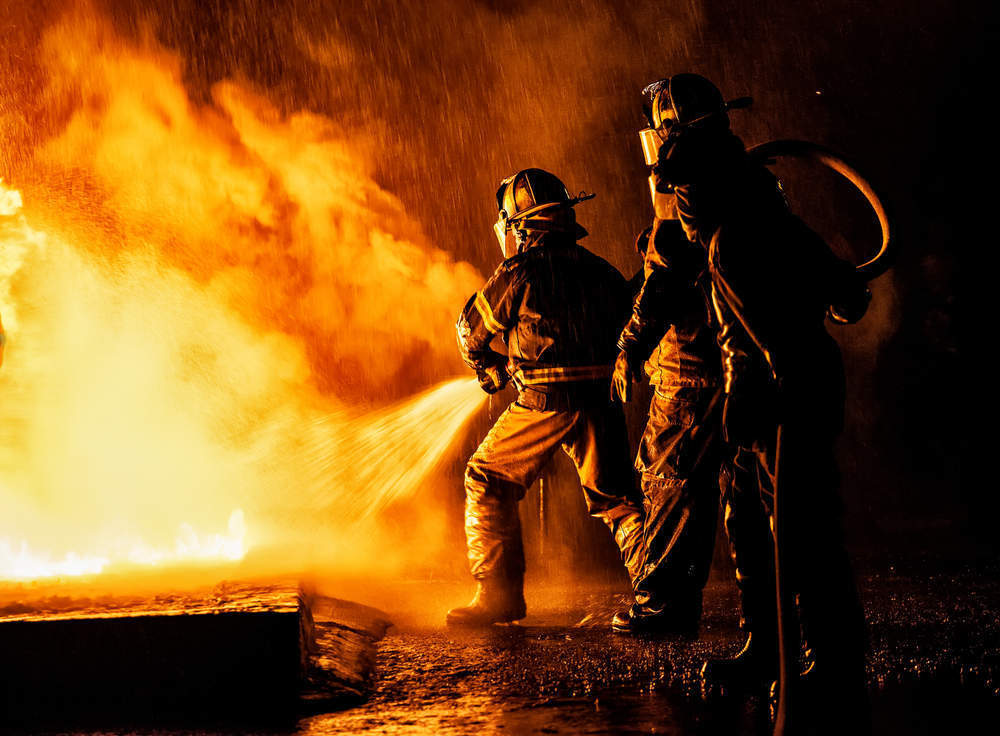
Some 90% of the artefacts stored in the National Museum of Brazil, Rio de Janeiro, went up in flames earlier this week.
It followed the Macintosh Building, one of city of Glasgow’s iconic landmarks, which was severely damaged by fires in June, as well as a summer of wildfires that wreaked havoc across Europe in what has been an unusually hot summer on the continent.

Access deeper industry intelligence
Experience unmatched clarity with a single platform that combines unique data, AI, and human expertise.
Meanwhile, Grenfell tower, a 24-storey residential block in London that caught ablaze in 2017, resulting in 72 deaths, stands burnt out on the London skyline.
However, none were quite as devastating as the California widlfires – the biggest in the state’s history – which has destroyed 1.4m acres of land at a cost of $1.1bn, with some areas continuing to burn.
Following what has been a fiery summer, Verdict looks at some of the technology that will be used to tackle the fires of the future.
Wearables
Firefighting is an incredibly dangerous job. However, new technologies are increasingly being used to help firefighters to respond faster and make better judgements in life-threatening situations.

US Tariffs are shifting - will you react or anticipate?
Don’t let policy changes catch you off guard. Stay proactive with real-time data and expert analysis.
By GlobalDataSweden has recently fitted its fire service with augmented reality helmets that promise to increase navigation speed by more than 260%. In smoke-filled rooms, a firefighter’s vision is substantially reduced. However, a C-THRU helmet uses thermal imaging to highlight obstacles and keep them moving.
Vital information, such as temperature, oxygen levels and CO2 levels, are projected onto the screen where it can be easily viewed during time-sensitive situations. Likewise, information and images can be fed back to a team outside of the building, allowing them to provide support and feedback throughout.
Purpose build for use in firefighting, Qwake Technologies, the company behind the helmets, believe that its product can allow firefighters to move through buildings five times more quickly, reducing the amount of damage caused and potentially saving lives in the process.
Qwake Technologies isn’t the only company working on thermal imaging systems. Scott Sight by 3M Scott has also manufactured a thermal imaging intelligence system that is built into the helmet, providing a hands-free alternative to traditional thermal cameras.
Jetpacks
Back in 2015 it was reported that Dubai had signed a contract with the Martin Aircraft Company for the purchase of 20 jetpacks. The intended use of these systems was to aid in first-responder situations.
Dubai is home to many of the world’s tallest buildings, including the Burj Khalifa, Marina 101, Princess Tower and 23 Marina. Given the height of these structures, authorities often have difficulties reaching their higher floors in emergency situations.
The use of jetpacks is seen as a possible solution to this.
Hassan Almutawa, director of the Dubai Civil Defence Operations Department, told the BBC:
“Sometimes we have challenges or difficulties to reach the top floors of those buildings. The aircraft can go into confined spaces to size-up the situation.”
The jetpacks are capable of flying up to an altitude of 1,000m, some 170m above the Burj Khalifa’s peak. The craft, which will be fitted with thermal imaging cameras, can reach speeds of 45mph and remain in the sky for up to 45 minutes.
Dubai has yet to make use of its fleet of firefighting jetpacks. However, the city started using water jetpacks known as “Dolphins” last year, which allows first responders to make use of the city’s waterways to make their way to a fire, while also providing access to an endless supply of water to tackle a blaze.
Drones
Unmanned aerial vehicles, otherwise known as drones, already play a key role in firefighting, helping in much the same way as Dubai’s use of jetpack-wearing firefighters.
These devices are used to gain intel on a situation far quicker than a human could. Likewise, drones also prove useful in search and rescue operations, helping to locate survivors before firefighters are sent in to complete the rescue. They also prove handy in the aftermath of the blaze, helping to assess the damage caused.
According to a report by the Center for the Study of the Drone, some 910 emergency service agencies in the US are already making use of drone technology in the fight against fires. However, that will likely climb as the technology’s capabilities improve.
Latvian technology company Aerones is currently working on a number of drone prototypes that are being purpose built to aid in emergency operations.
One of these prototypes is capable of climbing up to 980ft in just six minutes, far exceeding the height and speed at while a human would be capable of climbing. Once finished, this drone will be able to get within 30 metres of a blaze and spray a specially formulated chemical mixture onto the fire in order to contain it.
Of course, these drones will still require a human operator. However, it’s unlikely to be too long before autonomous drones remove the need for human firefighters. Startups like Skydio and Aerobotics are currently developing autonomous drones that will eventually be able to assess situations and make decisions without human help.






